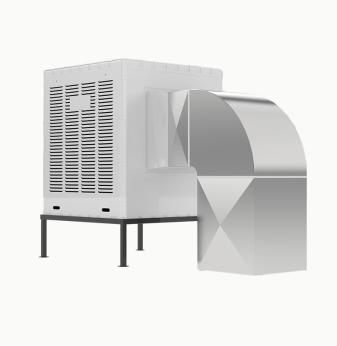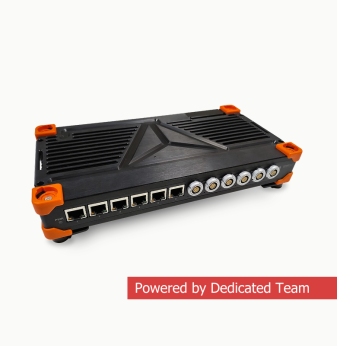Designing Embedded Systems for Harsh Environments: Best Practices in 2025

Embedded systems are no longer confined to controlled indoor settings. From oil rigs in the Arctic Circle to autonomous farming vehicles under the equatorial sun, modern devices must perform reliably under extreme conditions. For engineers, designing for harsh environments requires a careful balance of robustness, efficiency, and compliance.
In this article, we explore best practices for creating embedded hardware and software that can withstand temperature extremes, moisture, dust, vibration, radiation, and other environmental challenges.
What Are Harsh Environments in Embedded Design?
"Harsh" environments can vary by industry and geography. In general, they include:
- Extreme temperatures (hot or cold, or both)
- High humidity or immersion in water
- Presence of dust, sand, or corrosive substances
- Vibration and mechanical shock
- Electromagnetic interference (EMI)
- Radiation (e.g., aerospace, nuclear facilities)
Each of these factors affects how engineers choose components, lay out PCBs, select enclosures, and design software for reliability.
Best Practices in Hardware Design
1. Industrial-Grade Components
Use components rated for wide temperature ranges and harsh mechanical conditions. For instance, automotive- or military-grade ICs are designed to withstand -40°C to +125°C and often have enhanced packaging for shock resistance.
2. Conformal Coating & Encapsulation
Protect PCB assemblies from moisture, salt spray, chemicals, and particulates using conformal coatings (acrylic, silicone, urethane) or full encapsulation in epoxy or silicone potting.
3. Vibration-Resistant PCB Layout
Design with mechanically secure mounting points, use thicker PCBs, avoid tall or heavy components, and apply proper trace routing to reduce mechanical stress.
4. Robust Connectors and Cabling
Use sealed connectors (e.g., IP67-rated), strain relief techniques, and shielded cabling to prevent ingress and ensure signal integrity.
5. Thermal Management
Incorporate heat sinks, thermal vias, heat spreaders, and active cooling (if needed) to maintain component longevity in high-heat scenarios.
6. Shielding Against EMI
Use metal shielding cans, ferrite beads, proper grounding techniques, and EMI-certified enclosures to reduce susceptibility and emissions.
Embedded Software Considerations
1. Watchdog Timers and Fail-Safe Routines
In unpredictable conditions, software must recover from faults automatically. Watchdog timers help prevent lockups, while fail-safe modes ensure system recovery.
2. Memory Integrity Checks
Use ECC memory or implement checksums for RAM and flash to detect corruption from radiation or EMI.
3. Real-Time Operating Systems (RTOS)
RTOS like Zephyr or FreeRTOS enable deterministic behavior, prioritizing tasks like sensor monitoring and communication, which is critical in real-time applications under stress.
4. Over-The-Air (OTA) Updates
Systems deployed in remote or hazardous areas benefit from OTA firmware updates, reducing the need for physical access and supporting long-term maintenance.
Standards and Compliance
Designing for harsh environments often requires meeting stringent regulatory and safety standards:
- ISO 16750: Road vehicles - environmental conditions and testing
- IEC 60529: Ingress protection (IP) ratings
- MIL-STD-810: Military standards for environmental testing
- DO-160: Environmental conditions for airborne equipment
- ATEX/IECEx: Intrinsically safe equipment for explosive atmospheres
Compliance not only ensures safety and durability but also simplifies market access.

Real-World Design Scenarios
Agricultural Automation: Embedded systems in tractors and harvesters must withstand dust, rain, and vibration. Designers typically use IP67 enclosures, automotive-grade microcontrollers, and CAN-based communication stacks with real-time diagnostics.
Oil & Gas Monitoring: Remote monitoring units on pipelines endure extreme cold and electromagnetic noise. Engineers deploy heavily shielded enclosures with redundant power supplies and LoRa or satellite communication.
Mining Equipment: In underground conditions, visibility is low and vibration is high. Systems may include edge AI cameras with embedded FPGA accelerators and robust power conditioning.
FAQs and Long-Tail Questions
How do you design embedded systems for extreme temperatures?
Choose wide-temp-rated components, apply conformal coatings, and design PCBs with controlled impedance and spacing to accommodate thermal expansion. Use thermal modeling tools to simulate heat paths.
What IP rating is needed for outdoor embedded systems?
For most outdoor systems exposed to dust and water, IP65 to IP67 is standard. For immersion or pressure washing (e.g., agricultural sprayers), IP68 or IP69K may be required.
Can I use consumer-grade components in rugged systems?
It’s possible for cost reasons, but not recommended. Consumer components typically fail outside the 0°C to 70°C range and lack mechanical robustness or EMI resistance.
How to ensure reliable communication in noisy industrial environments?
Use shielded twisted pair cables, differential signaling (e.g., RS-485, CAN), and redundant paths. Add error correction and CRC checks at the software layer.
Conclusion
Designing embedded systems for harsh environments in 2025 demands a holistic approach: rugged hardware, resilient software, and thorough validation. By leveraging the right components, layout strategies, and environmental protections, engineers can ensure that their devices operate reliably where failure is not an option.
Promwad brings over two decades of experience in building embedded systems for demanding conditions — from Arctic satellites to mobile industrial robots. Whether you're designing a remote sensor or a mission-critical control unit, our team is ready to help you go the distance.
Our Case Studies








